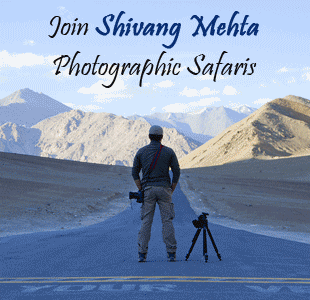First snow leopard year post COVID
It was a 2 year break for my snow leopard expedition as COVID had put breaks on this most anticipated Himalayan odyssey. So what changed in Spiti this year? Nothing substantial as time normally stands still in this stunning landscape. The only development which was Spiti was finally had telecom connectivity so spending those weeks after weeks in the tough sub-zero conditions wasn’t pinching this time. Not that it did earlier but at times one does become home-sick when you spend prolonged months in such remote areas. This year was different as Spiti had recreation opportunities and time-off moments in the form of Netflix documentaries and watching live cricket matches.
When I documented and witnessed snow leopard courtship in 2019 for the first time, I thought I was blessed by the Himalayas and it was an honour to be dwarfed in that grand landscape and gazing at the rare behaviour of this enigmatic species. Little did I know that the same luck would shine again in 2020 in a completely different location as snow leopard romance was in the air yet again. This year my expectations were moderate but Valentine’s Day was celebrated early in Spiti as for the third time (and this time around the distance was much closer) in my previous visits the same natural history phenomenon was documented again. The courting pair was seen throughout most of the expedition and that became the highlight of the visit.
Some images that made the post-COVID snow leopard expedition too special…

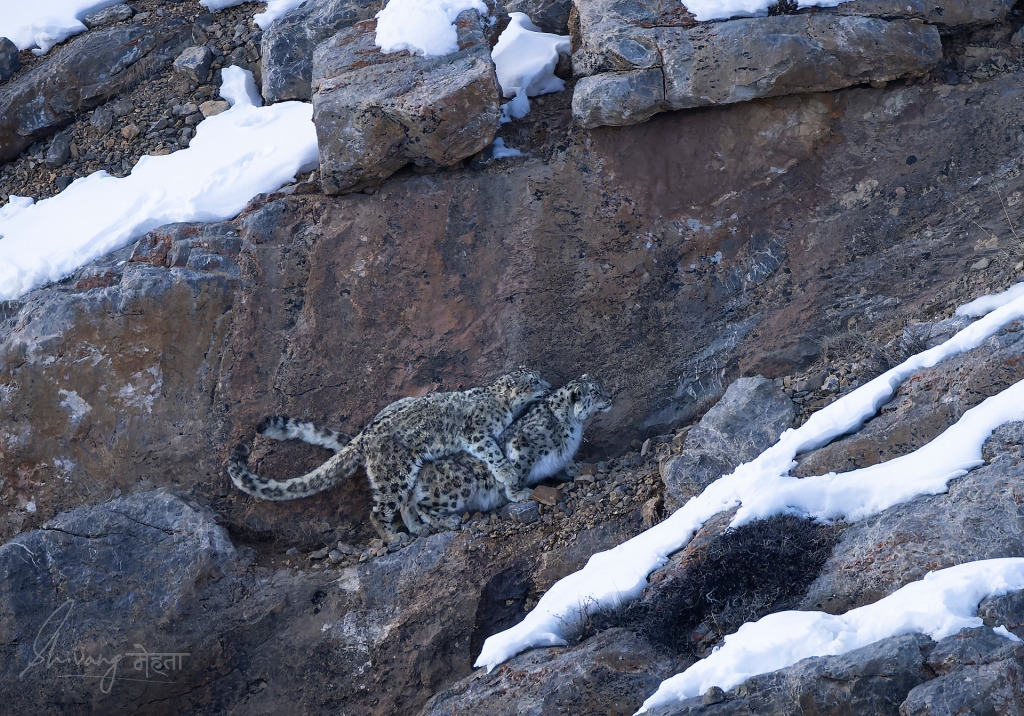


Lockdown Diaries…
As India is battling the second wake of Covid and the country is undergoing another lockdown, I shifted my base to Corbett outskirts in search of my routine lifestyle – being close to the woods and nature. Daily walks around my base camp have been fairly productive in terms of wildlife which has learnt to survive in close proximity to the surrounding villages. Tiger, leopards, Asian Elephants and many more species I keep bumping into have kept the camera busy and the mind tuned to active field work. Here are some visuals to support the lockdown diaries.





Canon R6 Field Testing
In the first week of July I tested out the sample units of the highly awaited and newly announced Canon mirrorless system. The sample units given to me comprised the Canon R6, Canon RF 800mm f11, Canon RF 600mm f11 and the Canon RF 15-35 f2.8
My field testing location was the outskirts of Corbett National Park and an area around Delhi where I had been working with langur monkeys through the lockdown period. While I was quite kicked about using a mirrorless camera but my expectations with the two f11 prime lenses was quite low when I started working in the field.
The lenses were feather-weight and as I started a gruelling monsoon trek in the humid forest I was wondering that in a normal scenario I would have never carried by big primes and here I had a mini toy of a 800mm which is so simple to carry but would it perform to the best of its abilities being fixed at f11? That was the question which needed answers.
As hours and days passed by my confidence in these lenses started growing. Why? Apart from the weight factor the lenses were fast in catching on to focus. Remember this is the monsoon period in India and I didn’t expect to see large mammals. So my test subjects were mostly small Himalayan birds and the miniature world. I was amazed with the performance of these lenses as I worked with small subjects like caterpillars, spiders etc. The sharpness was totally acceptable and over the days I enjoyed tossing a 800mm while trekking up and down the saal forests.
Talking about the Canon R6 the camera is no doubt a technological marvel from Canon. Light weight, brilliant low light performance and the animal eye tracking worked throughout whether it was the tiny macro subjects in Corbett or the ever-agile langurs and their cute little babies.
So for all you photographers who have been wanting to scale up your focal lengths for your bird photography or even for specialised expeditions like snow leopards where this range is needed, feel free to go in for these lenses along with the Canon R6 combination. It is worth considering.
Here are some sample images and a couple of video reviews that summarise the field visit.





Canon R6 and Canon RF 800mm f11 and the 2x RF converter

Canon R6 and Canon RF 800mm f11 and the 2x RF converter

Canon R6 and Canon RF 800mm f11 and the 2x RF converter
First Field Visit Post Lockdown
The world has changed in the past 4 months. For me as a field wildlife professional a lot has changed as this was the first time in nearly 2 decades that I kept away from active field photography such a long duration. As Indian national parks gradually come to terms with the COVID-19 tourism dynamics I visited Ranthambore National Park for a quick field visit. Life inside the forest was usual and life outside the forest was changed as it should have been. Sanitisation of safari vehicles, use of masks during safaris, sanitisation rules of lodges – these are some norms which we should be getting used to as India gears up for the post COVID-19 phase of wildlife tourism.
Here are some images are a short video that summarises the entire journey post the lockdown. It is not tough. Just take all precautions and you can keep that passion and hunger for outdoors alive!
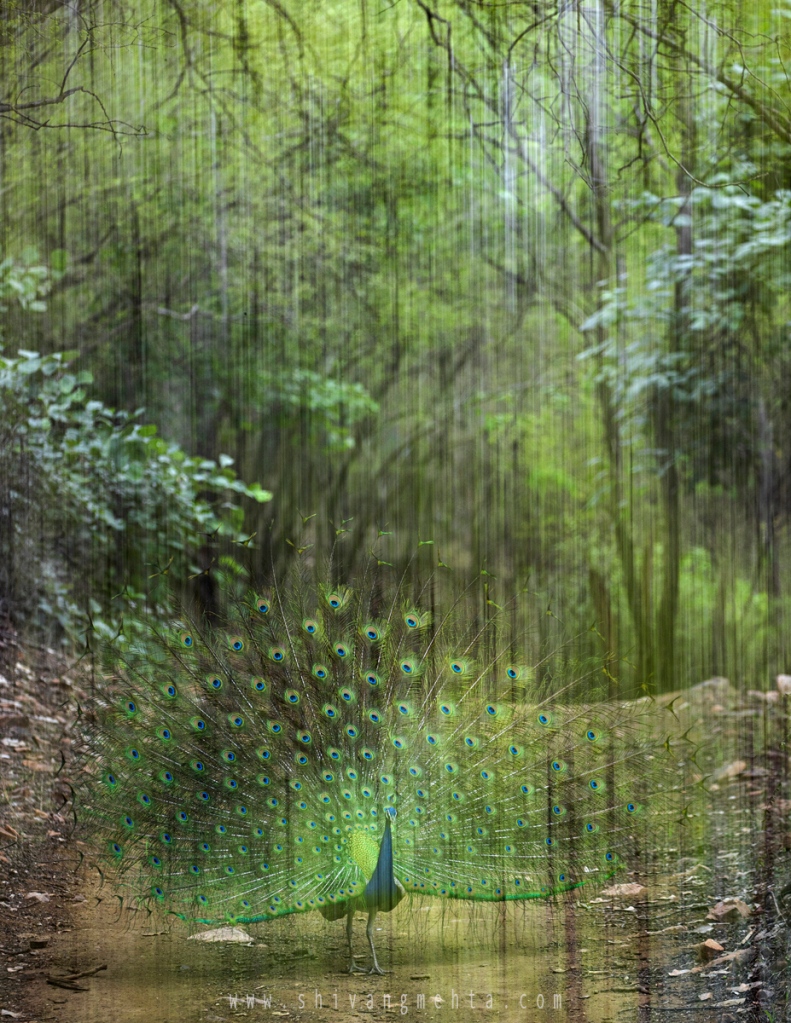
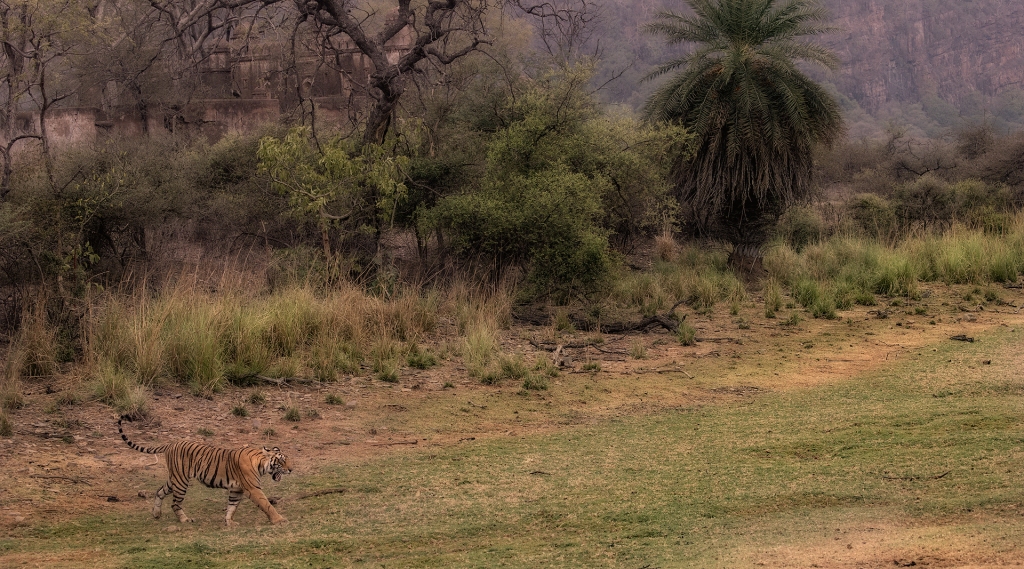
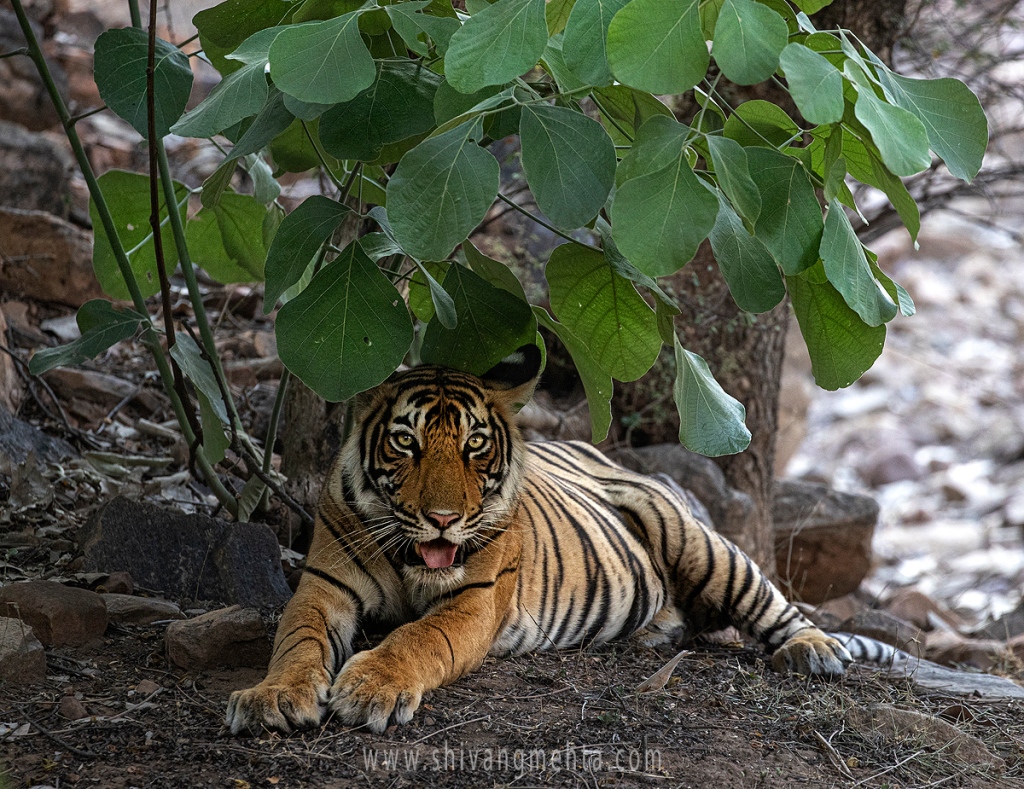
Big Cats can make you smile
Spent some quality time compiling some video footage taken in the past many years in Masai Mara for my YouTube Channel
We all know most of the Big Cats are lazy. As a still photographer most of the footage I had was full of sleeping cats. So this was the best I could do. Have a look and subscribe to my YouTube channel for regular updates on wildlife and photography.
Canon EOS 1Dx Mark III – The Speed Demon Arrives!
Check out the first hand field report of the brand new Canon EOS 1DX Mark III which was launched this week. I tested out the camera in tough Indian winter conditions through the month of December amidst foggy and misty mornings of Corbett and Keoladeo and the soft light in the Little Rann of Kutch in Gujarat. The superb focusing, laser fast AF selection using the smart controller, 16 FPS and the ever awesome low light performance which the 1D series is known for makes this one of Canon’s best 1D. And of course the Canon 1Dx Mark III is all set to open a whole new dimension when it comes to wildlife filming.
Check out this video and the subsequent images to summarise my journey with this speed demon so far.






All images (C) Shivang Mehta Photography
Migration 2018 – Week 2 & 3
It has been a tiring run of 14 day migration photo safaris in Masai Mara and hence I didn’t have time to update this space. The last fortnight has been interesting as we tracked and worked on Kaboso (the leopard) with her 2 cubs on multiple occasions. We were fortunate one evening to catch Amani (the cheetah) with her 3 young cubs as she has spending a lot of time in the conservancies outside the park but decided to venture in the park that evening. The marsh lion cubs were also under our constant radar but during our search for the cubs, we bumped into another lioness in the pride who revealed her 2 little secret fur balls and our guests got the first photo record of these tiny month old lion cubs.
Here are some images to sum up the entire fortnight. Gearing up for another fortnight in the African bush.










A Prince who ruled hearts…

15 years ago when I started working in one of India’s most stunning forests, the damp smell of the leaves that dazzled the forest floor overlooking a magnificent saal canopy and the musical sounds of crystal clear water cascading down the white rocks shining like jewels, as the first rays of morning rays kissed the Ramganga, were some of the first soul touching moments of Corbett which continued to draw me back to this magical landscape in various professional capacities.
The blue waters of this spectacular river and the presence of glittering coat of a shy and elusive Corbett tiger trespassing the divine landscape always made me skip a few heartbeats. Years passed by and then emerged a tigress from this river as a goddess and with the attitude of a bold mermaid who loved the rich blues of the Ramganga. She became a showstopper and for the first time Corbett was known because of a tiger called Paro. Having followed the stories of various tiger families across tiger habitats of India I always waited for an opportunity to observe a tiger family that ruled the rivers of Corbett. I anxiously waited for her future generations as I was curious to see a river denizen raising her young in the dramatic yet challenging terrain.

Over the past many years I followed various tiger families in various tiger habitats of India. As Paro walked out with her tiny borns dangling in her mouth last summer, I was geared to document a special story I had been waiting to work on for over a decade. A perfect character and the perfect family in some grand backdrops. The monsoons swept away half of her motherly aspirations and she was left with one male cub – the chosen one.

A little prince did not hesitate to take the first bold steps in a river rubbing shoulders with her mother. His antics made him a heartthrob as he braved the winters, climbed tree stumps and exhaled breaths of gold in the misty golden mornings of the Ramganga. He was always a little slow in catching up with her mother. But eventually he did make it every time.
However the night of May 27th was tough for our entire team as we knew the young prince had strayed a little too far and he was in danger. It was a night when a grieving mother battled an intruder and her cries echoed in the vast grasslands she owns. It was a night where we waited every minute for the sun to throw the slightest of light on a small water puddle which was the last refuge for a Prince who dreamt of ruling the river.
RIP “The Little Prince of Par” …

Your tales will be embedded in the soul of the rivers which have been your playground in the past one year. I pray for your the future generations of stripes who will continue to rule the rivers like you aspired to in the years to come.
A Decade with Tigers : Book Reviews


Thank you for the wonderful response to my book – A Decade with Tigers. I have been taking a note of each and every feedback you all have shared – both positive and negative. I hope you have enjoyed reading the stories of India’s top tiger brand ambassadors and in case you haven’t picked up a copy yet, log in to your Amazon or Flipkart accounts to get your copy today.
Here is what the readers and the media had to say about the book:
“From tiger mothers and male tigers to denizens of the tiger kingdom, the book is surely a treat for tiger lovers” – Deccan Chronicle
“The stunning pictures of Indian wildlife in this book are testament to the magnificence of our natural world” – Valmik Thapar
“Books like these with strong visuals unfold the wild mysteries of species of India and makes you connect with nature” – Dhritiman Mukherjee
Migration Uncut 2017 – Update 2
In the second phase of Migration Uncut 2017 photo safaris with me, we witnessed some amazing river crossings in the Mara river. Bahati made some superb appearances and Malaika and cubs gave some excellent photographic opportunities in the rain. One of the highlights was a sub adult cheetah trying to cross the Mara river. Fortunately he gave up as soon as he stepped in the water as the river was flowing at a rapid speed and there was no way it could cross.
Post Mara I took my guests to Bogoria and Samburu and millions of lesser flamingos greeted us in the lake. Samburu blessed us with some awesome leopard sightings and of course the endemic species like the reticulated giraffe and the gravy’s zebra.
Here are some images to summarise to fortnight. I am now gearing up for the start of the Indian photo safari season with tigers of Ranthambhore in October. Stay tuned to www.naturewanderers.com for more photo safaris at Corbett during the winters.











Migration Uncut 2017 – Update 1
I am mid-way through the annual Masai Mara Migration Uncut 2017 photo safari series. The weather has been a bit erratic in the Mara this time but we have made making effective use of the low light, showers and the bits of sunrises and sunsets to create very dramatic images for our guests. Lions and cubs have been one of our key focus areas as the cubs at the Double cross are too small and tracking them have been a challenge. We have had multiple productive sessions with them. Looking forward to some good river crossings in the coming days as I wait for a fresh batch of guests from India.














Countdown For Migration…
We are now in the migration season and as I gear up for my annual Masai Mara migration photo tour series, here is a recap of some memorable moments I have had in the Mara with our guests during the last 7 years of the Nature Wanderers Migration Uncut series.
From effective utilisation of morning and evening light situations to river crossings to hunt sequences, every day in Mara requires planning and I take this opportunity to thank all our guests over the past so many years for believing in me as their photography guide.
Looking forward to continuing more exciting adventures in August – September 2017.
Tiger Showers – Summers 2017
Have been constantly on the field of the past couple of months and haven’t had much time to sort images. Just back from back to back Corbett and Bandhavgarh photography tours and I must say both locations are teaming with wildlife action. While Paro – the river mermaid of Corbett – has been enthralling photographers with a consistent appearances in majestic Himalayan backdrops, Bandhavgarh has had some outstanding action with tiger cubs as Spotty – the reigning heartthrob of Tala – is in command with her young battalion of cubs who have made the grasslands their playground this summer. In the other areas of the part Bamera’s son (T37) has been displaying his affection for his offsprings as the 3 cubs of Kankati Jr. have been keeping shutters busy in the lone water body of the area.
Here is a quick preview for April and May 2017:
Nature… Devoid of colours
Black and white imagery looks stunning because of their artistic and dramatic appeal. I am frequently questioned about why I converted a particular image black and white. The process starts much before the image is shot as in my opinion shooting black and white images requires perceiving and pre-visualising a particular frame as black and white even before pressing the trigger. Here are some basic aspects which go through my mind during before shooting a black and white image:
- Tonality & contrasts
- Flat light and bland skies
- Would the subject stand out without colour?
- Textures and details
- Leading lines and geographic compositions
- Positioning of the light source
Do all images make good black and whites? I wouldn’t agree as a monochrome image is surely created in your mind and there are quite a few images that are meant to be photographed in colour.









Canon Wild Clicks – Season 6
Canon Wild Clicks Season 6 – India’s Only Live Photography Contest concluded in Dudhwa National Park. With identical shooting conditions, defined themes and a defined timeframe, over 100 contestants came together to test their creativity and think beyond tigers during the 4 day competition. The event was conducted in partnership with Uttar Pradesh Government and Forest Department of Dudhwa.
It all kickstarted with the Honourable Chief Minister, Mr. Akhilesh Yadav flagging off Canon Wild Clicks as Nature Wanderers along with the Government of Uttar Pradesh welcomed 100 chosen photographers from all corners of India to be a part of the mega event from Nov 17-21, 2016. The entire group was divided in 3 parts to be mentored and guided by ace photographers – Shivang Mehta, Tejas Soni, Sandeep Dutta and Saurabh Desai.
This year jury comprised of award winning photographers Ganesh H Shankar and Jagdeep Rajput who spent countless hours judging over 500 images being submitted as per 5 themes given to the contestants.
CWC 6 has always been a great platform for knowledge sharing and this year the contestants got to be a part of talks on photographic compositions by Ganesh Shankar and some interesting panel discussions with Jagdeep Rajput.
Pratik Pradhan from Mumbai was judged the overall winner of Canon Wild Clicks Season 6 and won a Canon EOS 5D Mark IV and some exciting goodies from our sponsors WulPro & Sirui. Along with the Grand Winner, Canon Wild Clicks – Season 6 had five themes winners & 12 honorary mentions.
Presenting brief visual gallery from Dudhwa:
Migration Uncut 2017 – Pre-Bookings
The plans for the 2017 Migration Uncut photo safari series in Masai Mara are on. All you serious photography enthusiasts who wish to join me in my Aug-Sep 2017 Migration batches to witness the Great Annual Wildebeest Migration in Masai Mara can please send me an email on shivang@naturewanderers.com
Migration Uncut 2016 – Week 4
We wrapped up week 4 at Migration Uncut 2016. The trans Mara is teaming with wildebeests and the yellows of the Savannah are sprayed with black dots stretching right up till the horizon. Such sights are visual treats during the migration season. The week saw some river crossings yet again and the crocs did have a good time in the Mara river. A cheetah at the doorstep of our camp kept us busy on a few mornings by sprinting across the grasslands in search of his breakfast. The highlight of the week was a good session with a leopard at Double Cross. The young female I photographed as a cub last year has shaped up quite well by occupying a territory close to her mother’s area. We caught her mating in August 2nd week and this week she stalked majestically one evening but failed to catch the gazelle she was targeting.
Here are a few images summarising week 4.
My bookings for Migration Uncut 2017 are open. Feel free to send me an email on shivang@naturewanderers.com to reserve a slot and be a part of the African photography fiesta.






Migration Uncut 2016 – Week 1
It was a good start to our annual Masai Mara photo safaris as we are close to wrapping up week 1 of Migration Uncut 2016. We photographed some good river crossings, lion cubs and cheetah action this. The weather has been clear and we have had some great sessions with various subjects in the morning and evening light.
Leaving for a game drive now and sharing some images that wrap up this week.







Tiger Diaries – June 2016
It has been a hectic but productive June till now. We started our work in Ranthambhore working on T60 and cubs when a news from Bandhavgarh caught our attention. A tigress called Spotty in the Tala zone of Bandhavgarh had given birth to her first litter. Weighing various pros and cons we changed gears and rushed to Bandhavgarh to start some extensive tracking for the newly seen cubs. A 7 day project resulted in some brilliant images of 2 month old tiger cubs for our guest who showed remarkable patience and perseverance in extreme weather conditions.
Monsoons showers have started hitting tiger parks and as we enter the last 10 days of the season lets wish the wild denizens of India a safe monsoon.








Summers @ Tadoba
Experienced Tadoba summers after a gap of 4 years. May 2012 was the last I spent a fortnight in the blazing sun and scorching heat of Tadoba. 4 years down the line, I led a small group of photographers who braved the heat to spend hours with the Sonam and Maya family – the current heartthrobs of Tadoba. The cubs have been shaping up quite well since I last saw them in December 2015. It was also a first experience for me with the majestic Bajrang male who is fathering Sonam cubs. He for sure is a charismatic tiger and would be instrumental in propelling the dynasty of tigers in Tadoba.
Recharging at home after a hectic 45 day travel schedule. Stay tuned for June diaries as we enter into the last month of the tiger season in India before the monsoons…




Tiger Marathon 2016 – Field Updates
The 2016 edition of Tiger Marathon – the annual back to back tiger photography tours by Nature Wanderers – ended this week with some exemplary sightings in Ranthambhore and Corbett National Park. While the lakes were productive again in Ranthambhore, we also got the opportunity to photograph the newly crowned mother T60 and her 3 cubs. Sessions with Noor (T39) and T57 were equally intense and productive.
Corbett on the other hand along with expected elephant action was ruled by Paarwali sightings as the river mermaid of Ramganga gave multiple opportunities for photography in typical Corbett habitats. Here are a few images created in the past fortnight.




















Canon 1DxM2 – Field Test
The much awaited successor of the Canon 1Dx – the top end Canon camera for sports and wildlife photography – was announced and launched by Canon recently. Thanks to Canon India for giving me the opportunity to use the first sample unit of this new machine in the challenging field conditions of Indian forests. Having used the 1D predecessors like the Canon 1DM4 and Canon 1Dx extensively in the last 5 years, I was particularly intrigued to know more about the Canon 1DxM2 because for me Canon 1Dx was the complete camera and I wasn’t expecting an upgrade so soon.
Drawing a direct comparison between the Canon 1Dx and Canon 1DxM2, here are some broad level observations (please note that I tested the camera for still photography. The Canon 1DxM2 records 4K videos which is not covered in my field tests):
Muted Shutter Sounds
In comparison to the predecessors like the 1DM4 and the 1Dx the first thing you realise about the 1DxM2 is the relatively muted tone of the shutter. As per the tech specs an advanced mirror flapping system has been introduced which will probable and possibly reduce in-camera vibrations while firing bursts of 12-14 fps. Typically on a Canon 1Dx I tone done my fps to reduce in camera vibrations while firing a burst so that the probabilities of some images turning out to be tad soft goes down while shooting some fast action. I shot some fast Dhol action sequences in Pench National Park at 14fps in challenging low lights early morning and was pretty satisfied with the series in terms of image sharpness.

ISO 3200, f5.6, 1/500
Shot using a Canon 400mm f2.8 IS2 lens. A burst at 14 fps was fired for this series
Expanded Viewfinder Grid
The 61 point AF grid through the Canon 1DxM2 viewfinder looks a bit more expanded as compared to the Canon 1Dx. It essentially means that your in-camera composition is better.

Aided with the expanded AF point grid, here is an in-camera composition of cheetals grazing in morning light at Pench National Park
Low light performance
I pushed the Canon 1DxM2 ISO to a maximum of 3200 during some misty conditions at Dudhwa National Park and the noise was workable and can easily be removed using noise reduction tools.
View Finder Guiders
A feature which was introduced in the Canon 7DM2 has been pushed in the new Canon 1DxM2 as well. If you look through the view finder of this body, you can see some of your basic camera settings like White Balance, Metering Modes, AF Drive, Shooting Modes and a horizon stabilisation bar. The font colour is however black and the display works very well only when you are shooting with bright backgrounds.
Advanced AF for f8 lenses
Typically while using a Canon 1Dx with Canon 500mm or 600mm f4 lens and a 2x converter, only the centre focus points used to be active. A noted beneficial feature with the Canon 1DxM2 is that all 61 focus points remain active with f8 lenses (if you are using the new generation 1.4x and 2x converters). 41 of those points are cross-type, having both horizontal and vertical line sensitivity. 5 central points are dual cross-type and have wider baselines that offer high precision focusing for F2.8 and faster lenses.
Touch Screen
While shooting using the Live View feature you can now touch the LCD of the Canon 1DxM2 to focus your subject. The feature is good for shooting videos as well.

I mounted the camera on a beanbag and used the Live View AF touch screen feature to focus on the subject at the corner of the frame. Using Canon 1DxM2 and Canon 400mm f2.8 IS2
Feel free to share your thoughts in the comments section…
Mystic Corbett…
Have blogged about mystic forms of Corbett in the past and here is another brief update from the foothills from the Himalayas where early morning rays mingles with the mist to create some divine light with a midas touch which sparkles any subject in such majestic backdrops. This time it was some deer species like the hog deer and in search for mist and light, we bumped into a tiger sitting in a dramatic saal forest.
Keoladeo Updates…
The annual Canon-Nature Wanderers Keoladeo expedition just got over. Bharatpur is back in action after a dull season in 2015. The painted stork colonies are back and so are the darters and cormorants fighting over the fresh fishes. Our photography group worked a lot around Saras Cranes in the mystic winter backdrops of the Keoladeo marshes. Not to miss some winter visitors like the Siberian Rubythroat that added a sparkle to the portfolios of images being created.
As always, the workshop was full of experimentations, learning and new techniques which our shutterbugs tried in challenging light scenarios. Here is a brief glimpse of images created during the 2016 edition of the photo tour.










